Watering Fruit Trees in a Food Forest
Watering fruit trees in a food forest requires a little planning when building a backyard orchard. Applying water to a couple of trees with a single hose is simple. Once you have a dozen or more trees and countless berry bushes a watering system becomes a major time saver. Not only will you be prepared to water the gardens when you are away on vacation, but you will save hours of time standing holding a hose if you install some drip lines that reach all your favorite trees, bushes, and flower gardens.
Fruit Tree Watering Basics
The basic details for watering fruit trees are simple. Water frequently when first planted. Then regularly for the first two years of the tree being transplanted to your property. Followed by monitoring the tree and weather patterns. Water frequency depends on the current time of year and heat / dry conditions.
Mulch and water go hand in hand when it comes to fruit trees. Add wood chips, leaf mulch, chop and drop material from the garden, or sheets of cardboard to protect the soil around the base of the trees from the sun to keep the ground moist. Contact your local arborist companies to arrange a drop of woodchips for free or a very small fee.
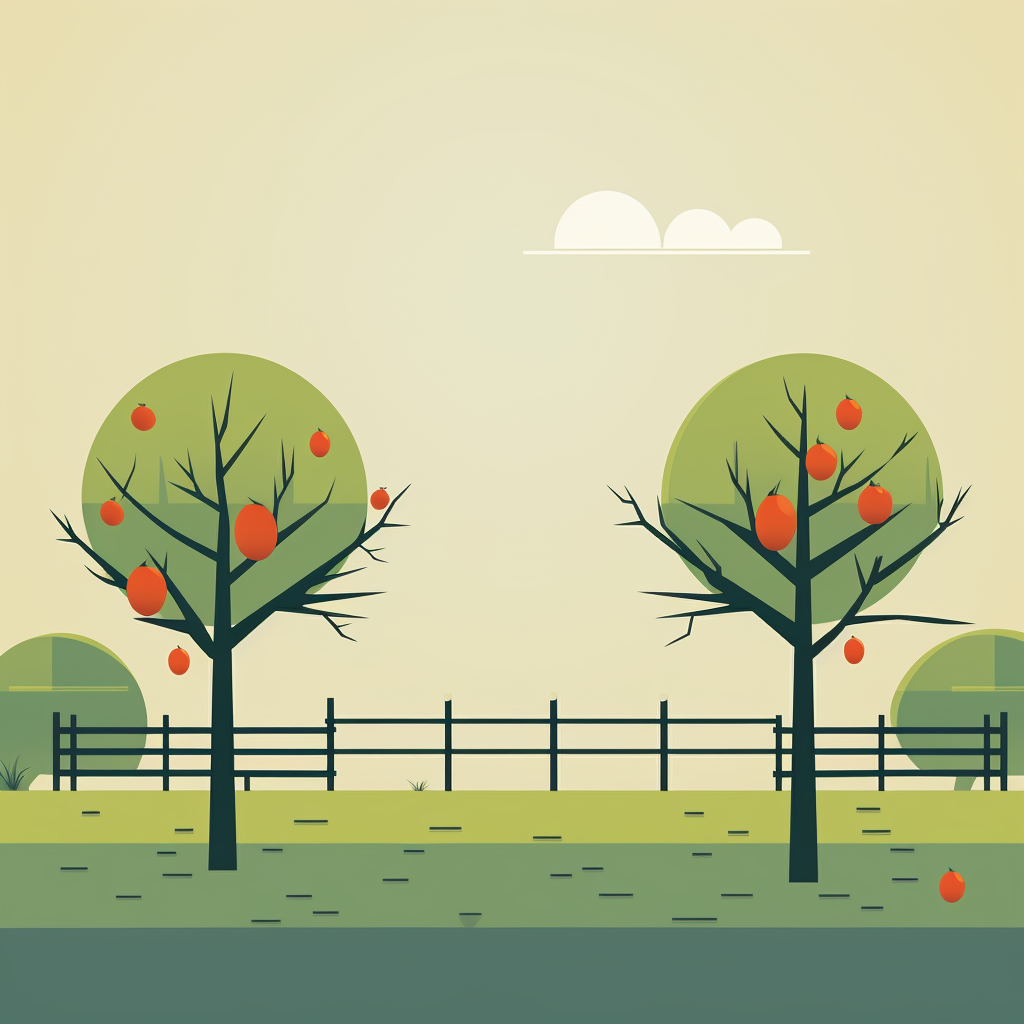
Newly Transplanted Trees
You should plant trees where you have a nearby water source. Watering bare root fruit trees consistently during the first two or three years is essential to their long term success. The freuqncy and duration of each watering will be determined by the soil the trees are planted in. Sandy soil requires more frequent watering than clay. Clay needs more water each soak, not as frequent. In general, a fruit tree wants 2 to 3 inches of water per every 10 t0 14 days.
- Add a bunch of water to the hole when you transplant a new tree and allow the water to seep into the ground prior to placing the tree in the hole. This guarantees that the soil below the roots is wet and ready for the tree.
- Water every day for the first two weeks of a newly planted fruit tree. If the weather is cool and rainy, you can skip ahead to just once-per-week deep water. However, I recommend giving trees water during this critical time to ensure the lower root zone is wet.
- Once per week water the fruit trees deeply. Do this twice per week when it starts to get warm and dry out.
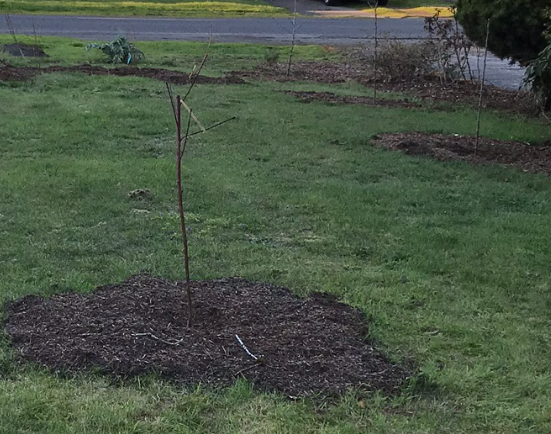
Established Fruit Trees
- Young trees consider weekly waterings that are slow.
- The frequency that works for most fruit trees once established is 10 to 14 days. Best long-term tree health requires slow and deep watering.
- Keep fruit trees and bushes well-mulched so the soil retains moisture.
- Use an irrigation drip line or the 5-gallon bucket method for deep watering.
- Water out to the drip line of the tree. This is the area below the branches and leaves of the tree canopy.
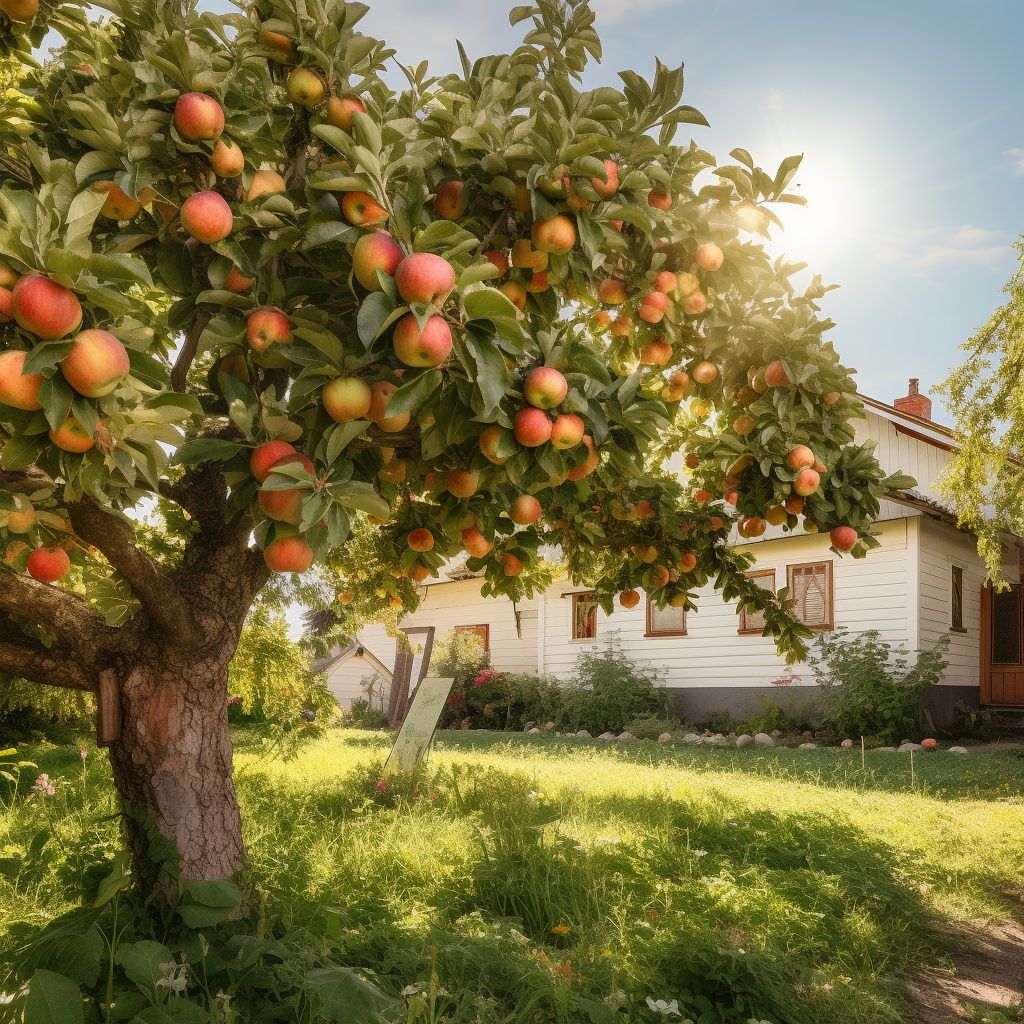
Watering a Food Forest Options
There are many options to consider in how to keep a young or mature food forest watered. Whether you add an irrigation drip watering system to your property or use some manual plan keep young fruit trees watered regularly. Older trees need less frequent watering, but take advantage of mulch to reduce the amount of water that is required during the hot summer months.
Always consider a deep wood chip mulch. Ultimately, 10 inches or more of a deep mulch builds the fungal network around trees for them to thrive. When interplanting in a deep mulch food forest make a hole in the mulch all the way to the soil. I then add some additional compost and garden soil to the hole and then add the plant. These plants need water in order to establish and thrive.
Consider using an oscillating sprinkler to water the food forest from time to time. This ensures that the ground cover plants and other interplanted crops you have stuck in the ground get water. They may be planted off the installed drip lines so a broad-coverage sprinkler is a decent option. This is something that we do every other week or so to give the ground a good soak during the warmest and driest parts of the year.
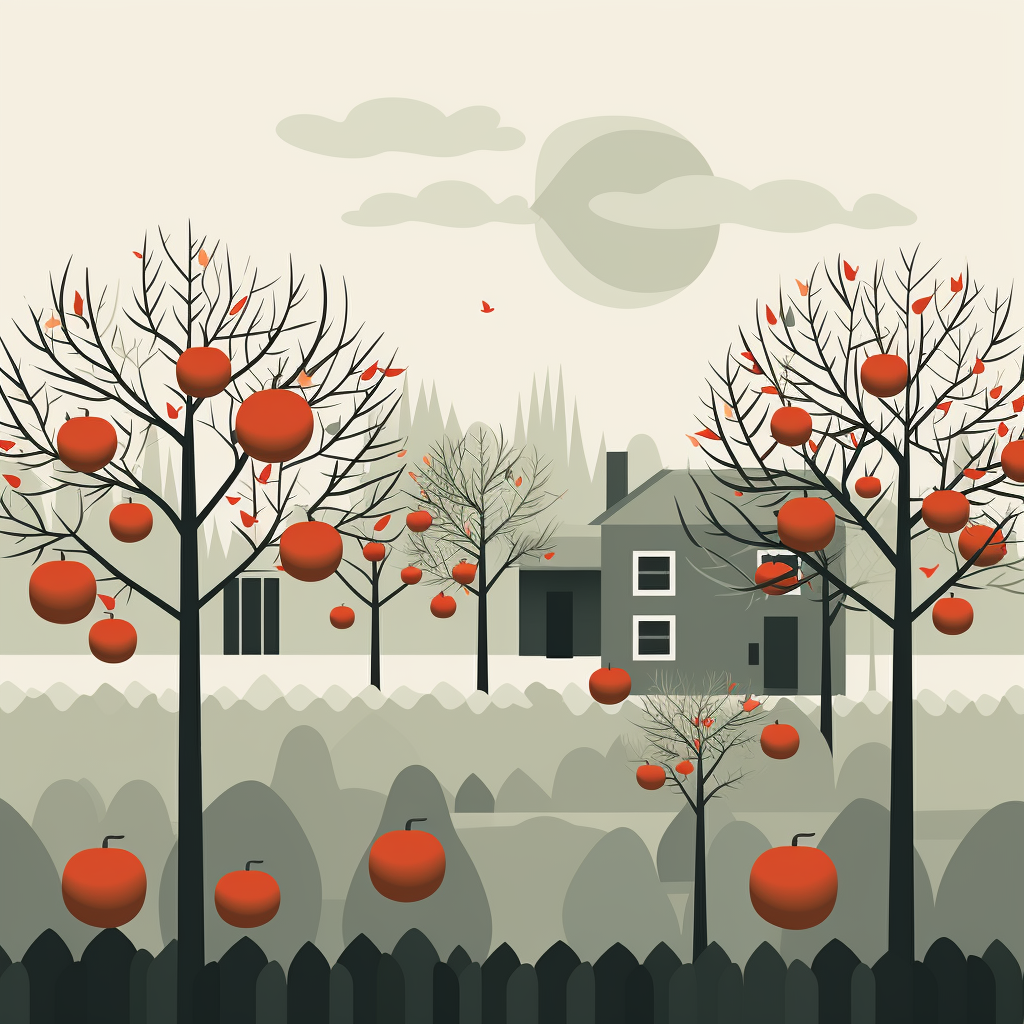
Drip Irrigation for Trees
A drip irrigation system installs a watering line on the surface of the ground. This connects to a standard hose to the external faucet on your house.
Installing the drip line is a straightforward process. Once set your food forest can thrive with consistent watering that does not take up hours of your time. Trees need slow watering so the moisture can seep into the grounds to reach the roots.
Trees also benefit from watering in a large circle around the tree not just at the trunk. Tree roots extend out to the tip of the drip line from the branches and leaves of the tree and beyond. Creating a circle with drip line or adding an attachment to spray a small area allows for greater coverage to where the tree needs watering.
5 Gallon Bucket System
The gallon bucket system for watering is simple. Make three holes with a 1/2″ drill bit on the side next to the bottom.
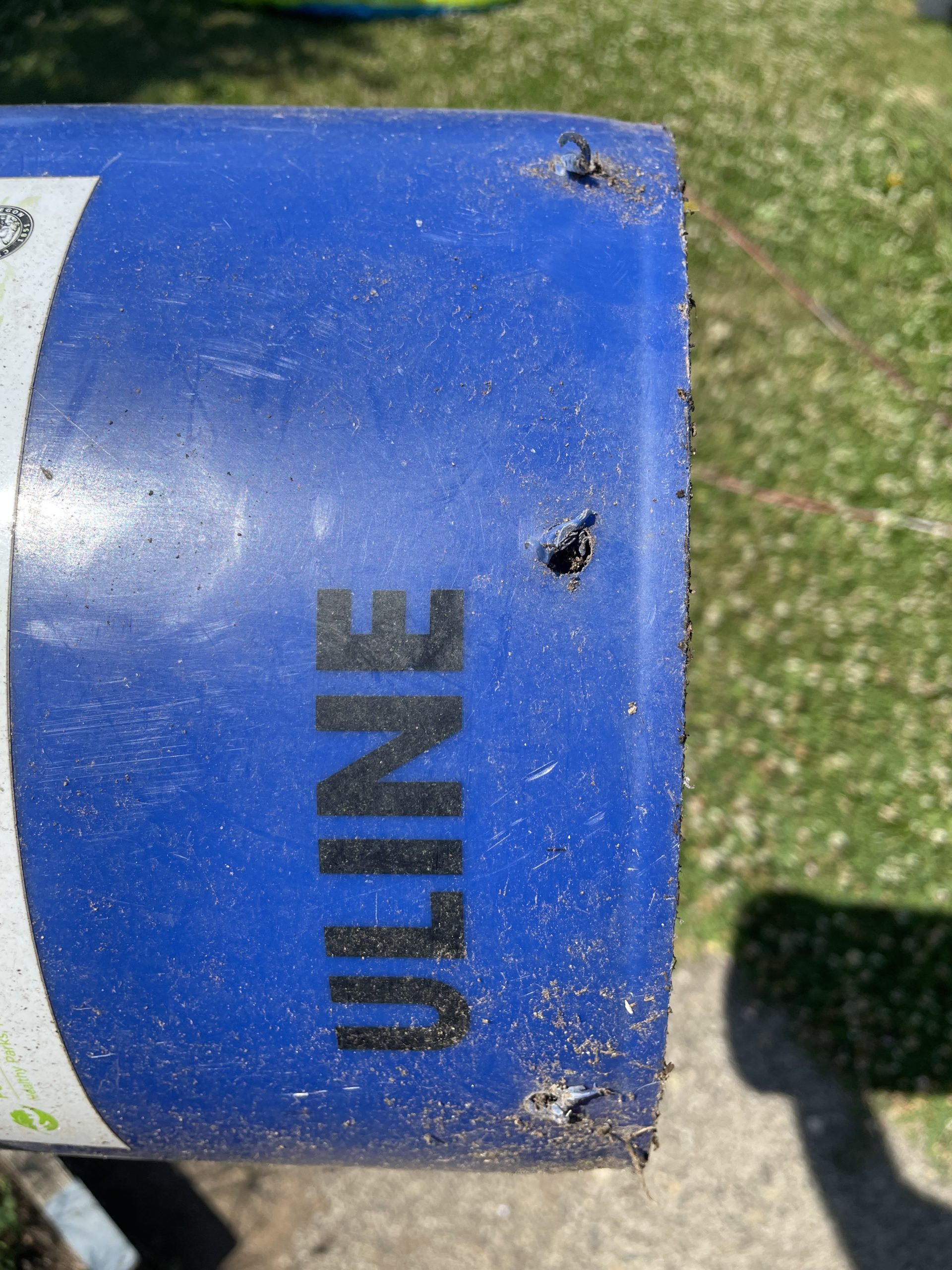
Fill the bucket up and let it drain to empty. Fill it up again. Repeat this three times. This puts 15 gallons of water at the base of the tree over the course of a few minutes. Use smaller holes to control the drip even slower, however, I have found that three is a good flow of water for most soils. If the water is pooling on the surface and not seeping into the ground use fewer holes for your next bucket.
Berry Bushes
Do not forget your berry bushes. Raspberries, blueberries, honeyberries, blackberries, strawberries, etc all need regular watering. Drip line installation around the base of the plants is the best long-term solution. Using a hose with a sprayer can be effective for covering the ground with your berry crops. Due to the number of bushes you likely have installed using the bucket method is less likely to be the right solution. During the fruiting season, I prefer to water the berries at least twice per week. Use less or more water depending on your climate and how the plants are responding.
Irrigation System
An irrigation system with a timer is the only way to keep your plants watered while away on vacation. Add a control box to your external hose faucet before it connects to your drip irrigation system and keep your watering to a timed schedule.
This is hands-off watering once installed. A system that is set up correctly will keep your vegetable garden and food forest trees deeply watered.
Hand Watering
Hand watering is the right solution for a couple of fruit trees. You will want a drip line system installed by the time you have several trees.
Fill up a watering can multiple times and water 15 gallons of water around the base and drip line of the trees. I generally will drag the hose over to the tree and water the area under the tree canopy. Turn the water low on the faucet and let it run on a trickle for 30 minutes or more. This will let the water to slowly seep down to the root zone. I will move the hose around a couple of times on a mature established tree.
Newly planted trees can easily be hand-watered with the hose method above. Due to the smaller root zone, the hose left on a slow trickle at the base of the tree will saturate the root zone in 30 minutes.
Traditional Sprinklers
The traditional oscillating sprinkler works to cover plants in the food forest. A drip line is great for the precision watering of plants in a food forest. However, if you enjoy interplanting lots of random plants it is helpful to occasionally run a sprinkler.
This will get coverage to all of the in-between spots. We put random strawberry plants and flowers like tulips, and iris, and chop and drop crops like comfrey all over our garden. They need water too. The sprinkler makes sure all the dry spots get a little moisture.
Duck Pool in the Food Forest
Ducks love a pool party. A kiddie pool is a wonderful place for ducks to play during the summer. Instead of keeping it one part of the yard all year long. We move the duck pool to different places of the backyard orchard. We fill the pool up with water and let the ducks play in it all day long. Then in the evening we fill up a few watering cans and hit plants that are in containers or showing signs of needing a drink. Once that is done the duck pool gets turned over and a large area around a fruit tree or two gets a large volume dumped on it.
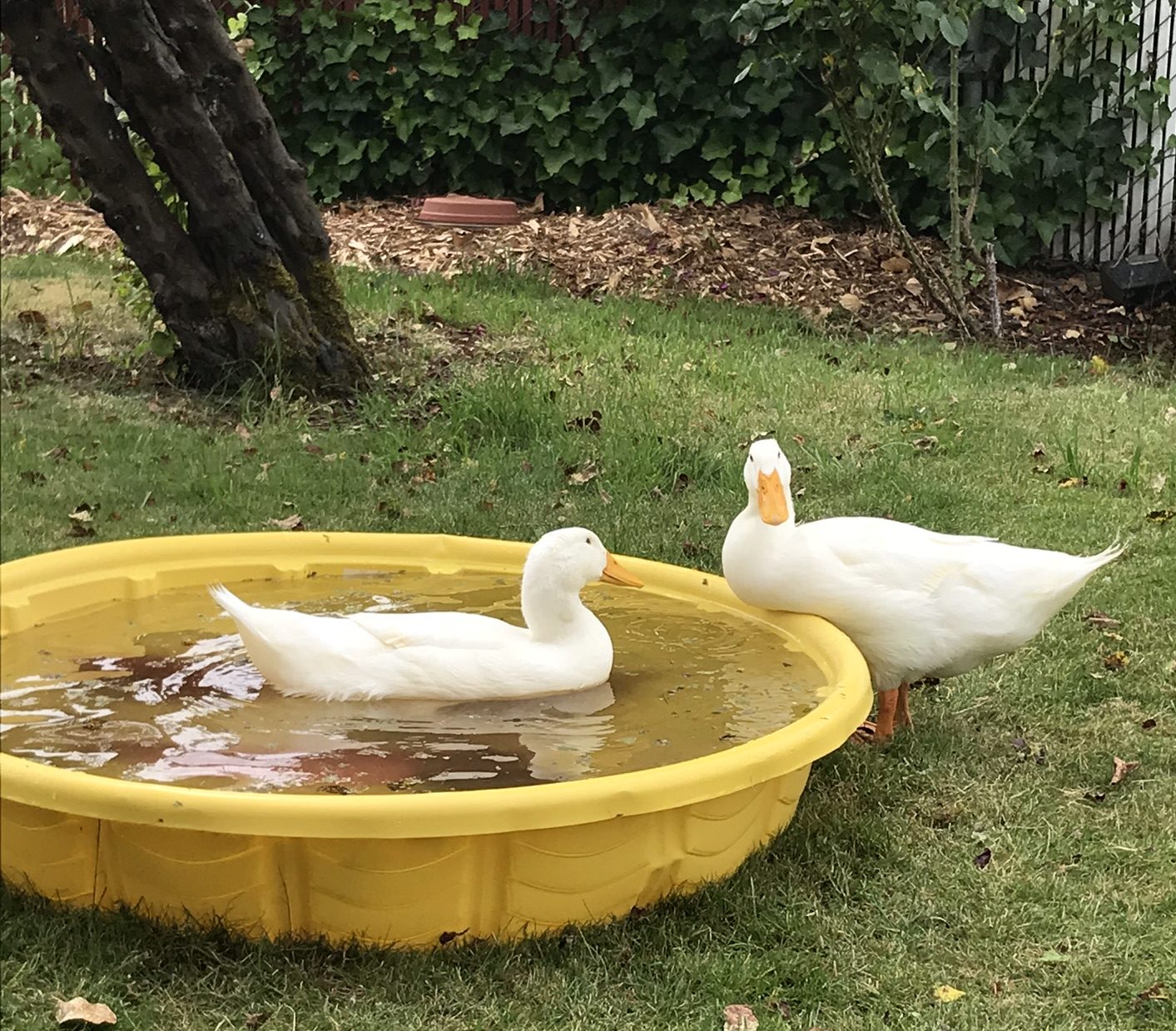
This water will spread out since it can’t seep in deeply quickly. The roots of trees extend out far though so this is a good way to get a large volume out to the sides of a tree, keeping those feeder roots moist.

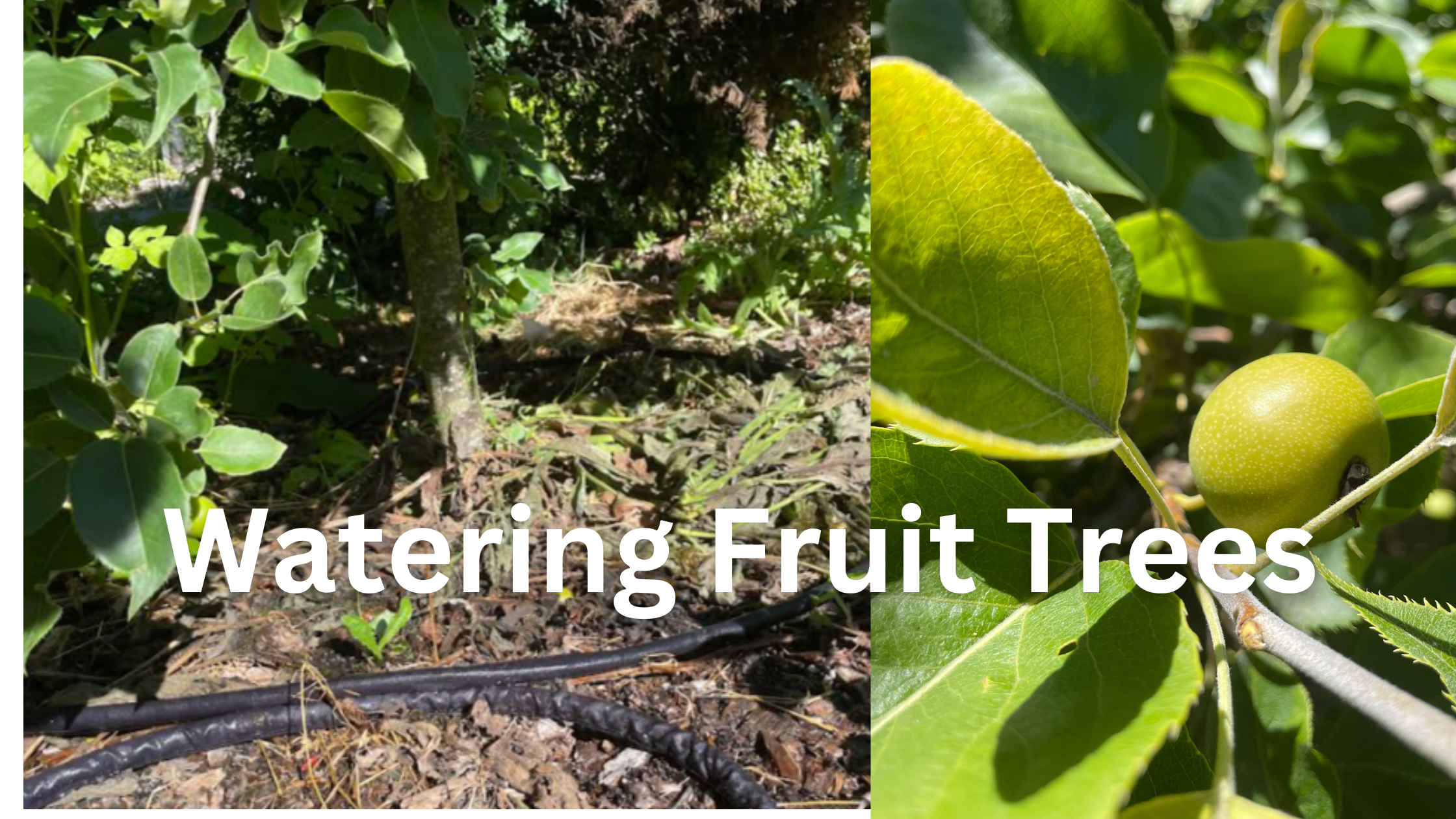


Recent Comments